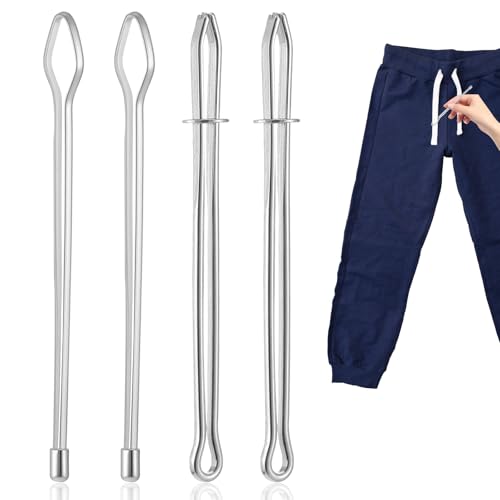Ever struggled with puckered seams ruining your sewing projects? It happens to the best of us, but don’t worry—you’re not alone. Puckered seams can sneak up on anyone, making your garments look less polished than you’d like.
The good news is, with a few simple tips and tricks, you can smooth out those pesky wrinkles and achieve flawless results every time. From adjusting your stitching technique to choosing the right fabric, we’ve got you covered. Let’s dive into the best strategies to keep your seams neat and professional-looking.
Understanding Puckered Seams
Puckered seams form when fabric gathers unevenly, creating a wrinkled look. Understanding the causes helps you prevent and fix them effectively.
Common Causes
- Incorrect Thread Tension: Uneven tension pulls the fabric, leading to puckering.
- Inappropriate Fabric Choice: Stiffer fabrics resist stretching, causing seams to wrinkle.
- Wrong Needle Size and Type: Using a needle that’s too large creates bigger holes, allowing fabric to pucker.
- Poor Stitching Technique: Inconsistent stitching disrupts fabric alignment.
- Elastic or Stretch Fabrics: These materials require specific handling to maintain smooth seams.
Identifying the Problem
- Visual Inspection: Look for uneven ridges or waves along the seam line.
- Feel the Fabric: Gently tug along the seam to detect gathered areas.
- Check Stitch Consistency: Ensure stitches are uniform in size and spacing.
- Assess Fabric Movement: Move the fabric to see if seams shift or distort under tension.
- Examine Needle and Thread: Verify you’re using the correct needle type and strong thread for your fabric.
Preventing Puckered Seams
Implement these strategies to maintain smooth, professional seams in your projects.
Proper Tension Settings
Setting the correct thread tension prevents fabric from gathering.
| Fabric Type | Upper Tension | Lower Tension |
|---|---|---|
| Cotton | 4 | 4 |
| Lightweight | 3 | 4 |
| Heavyweight | 5 | 4 |
| Knit Fabrics | 3 | 5 |
Adjust tensions based on fabric type and project requirements. Consult your sewing machine manual for specific settings. Consistently monitor tension when switching fabrics to avoid puckers.
Choosing the Right Fabric
Selecting appropriate fabrics reduces the risk of puckered seams.
| Fabric Type | Ideal Projects | Recommended Tension Adjustment |
|---|---|---|
| Cotton | Shirts, skirts | Standard tension |
| Linen | Dresses, blouses | Slightly higher tension |
| Denim | Jeans, jackets | Higher upper tension |
| Jersey | T-shirts, activewear | Lower upper tension |
Opt for woven fabrics like cotton, linen, or denim for stability. Use knit fabrics such as jersey or spandex for stretch projects. Match fabric weight to your sewing machine settings to ensure compatibility and minimize seam puckering.
Techniques for Fixing Puckered Seams
Puckered seams can compromise your project’s finish, but several techniques can restore smoothness and professionalism to your work. Implement these methods to eliminate unwanted gathers and achieve flawless results.
Adjusting Stitching
Proper stitching adjustments can prevent and fix puckered seams effectively:
Thread Tension:
- Upper Tension: Lower for lightweight fabrics like chiffon or silk.
- Lower Tension: Increase for heavier fabrics such as denim or canvas.
Stitch Length:
- Use shorter stitches for stable fabrics to reduce puckering.
- Opt for longer stitches on stretch fabrics to allow flexibility.
Needle Selection:
- Choose a needle type matching your fabric—ballpoint for knits, sharp for wovens.
- Ensure the needle size suits the fabric weight to maintain even stitches.
Presser Foot Pressure:
- Adjust according to fabric thickness to control feed rate.
- Reduce pressure for delicate fabrics to prevent stretching and puckering.
Seam Allowance:
- Maintain consistent seam allowances to ensure uniform tension distribution.
- Press seam allowances during sewing to minimize bulk and gather.
Ironing Tips
Proper ironing techniques enhance seam smoothness and reduce puckering:
Iron Temperature:
- Set the iron to the appropriate temperature for your fabric type.
- Use steam for natural fibers like cotton and low heat for synthetics to avoid damage.
Pressing Direction:
- Press seams open or to one side to lay them flat.
- Avoid rocking the iron back and forth to prevent shifting fabric layers.
Use Pressing Aids:
- Apply a pressing cloth to protect delicate fabrics from direct heat.
- Utilize tailor’s tacks for precise seam definition.
Steam Treatment:
- Use steam to relax fabric fibers before pressing for smoother seams.
- Apply steam evenly across the seam area to eliminate wrinkles and gathers.
- Immediately press seams after sewing while the fabric is still warm.
- Re-iron seams as needed to maintain a crisp, puckered-free appearance.
By fine-tuning your stitching settings and mastering ironing techniques, you can effectively eliminate puckered seams and enhance the overall quality of your sewing projects.
Best Tools and Supplies
To fix puckered seams effectively, you need the right tools and supplies. Here’s a list of essentials that will help you achieve smooth, professional-looking results:
Sewing Machine with Adjustable Tension
A reliable sewing machine allows precise control over thread tension. Models like the Brother Quantum or Singer Heavy Duty offer adjustable settings suitable for various fabrics.

High-Quality Needles
Using the correct needle type prevents fabric damage. Opt for ballpoint needles for knit fabrics and sharp needles for woven fabrics. Brands such as Schmetz and GSI provide durable options.
Superior Threads
Choose threads that match your fabric type. Polyester threads work well with most materials, while cotton threads are ideal for natural fibers. Jersey-specific threads help maintain stretch in knit fabrics.
Seam Ripper
A sharp seam ripper is essential for correcting mistakes without damaging the fabric. Look for ergonomic designs like the Gingher Seam Ripper for comfortable handling.
Presser Feet
Different presser feet enhance stitch quality. Consider adding a stretch foot for elastic fabrics and a zigzag foot for decorative stitching. Brands like Janome and Universal offer versatile options.
Iron and Pressing Tools
Proper ironing smooths seams and sets stitches. A high-quality steam iron, such as the Rowenta Professional, and a pressing board are crucial for achieving crisp results.
Fabric Markers and Chalk
« Don’t Miss Out! Here’s How to Subscribe to the Best Sewing Magazines Now
Master Your Craft: Sewing Mentors – Finding Guidance Online to Elevate Your Skills »
Marking fabric accurately prevents errors during sewing. Water-soluble fabric markers and chalk pencils from brands like Sailrite ensure clear, temporary markings.
Cutting Tools
Sharp scissors and rotary cutters provide clean fabric edges, reducing puckering. Invest in a pair of fiberglass scissors and a Self-Healing Rotary Cutter for precision cutting.
Thread Snips
Small, sharp thread snips make trimming threads easy without disrupting your work. Organized thread snips with a magnetic head keep your workspace tidy.
Storage Solutions
Keeping your tools organized enhances efficiency. Use tool organizers or drawers to store needles, threads, and other essentials neatly.
Table: Recommended Tools and Their Uses
| Tool | Use |
|---|---|
| Sewing Machine | Adjustable tension for various fabrics |
| High-Quality Needles | Prevent fabric damage, match fabric type |
| Superior Threads | Suitable for different materials |
| Seam Ripper | Correct stitching mistakes efficiently |
| Presser Feet | Enhance stitch quality for specific tasks |
| Iron and Pressing Tools | Smooth and set seams effectively |
| Fabric Markers and Chalk | Accurate fabric marking |
| Cutting Tools | Precise fabric cutting to minimize puckering |
| Thread Snips | Clean thread trimming without hassle |
| Storage Solutions | Organized workspace for better efficiency |
Having these tools and supplies on hand equips you to tackle puckered seams confidently. Invest in quality products to ensure durable and professional results in all your sewing projects.

Conclusion
Puckered seams don’t have to be a setback in your sewing projects. With the right adjustments and a bit of practice you can achieve smooth and flawless results every time. Experiment with your machine settings and choose fabrics that work best for your designs. Don’t hesitate to use the recommended tools to make the process easier and more efficient. Every stitch you make brings you closer to mastering your craft. Keep experimenting and enjoy the journey of creating beautiful, professional-looking garments. Happy sewing!

















